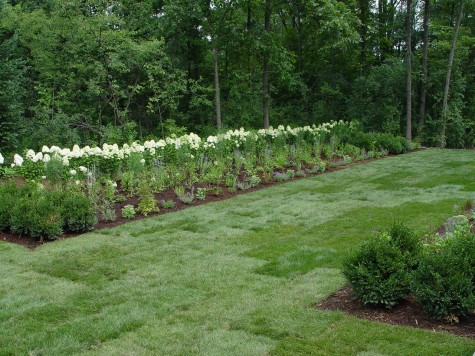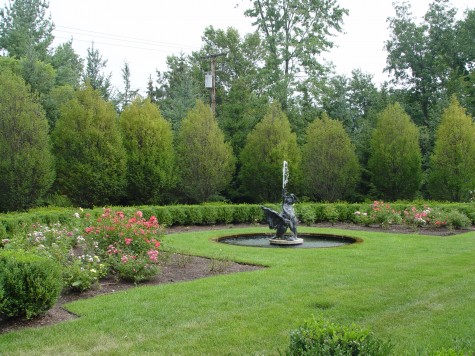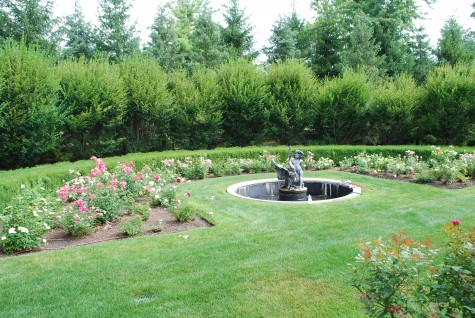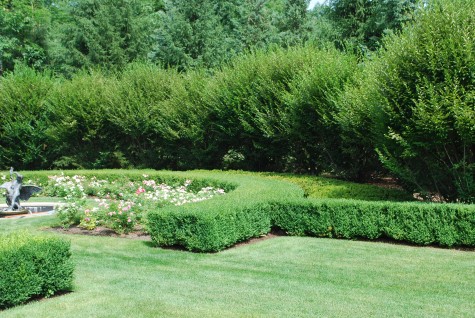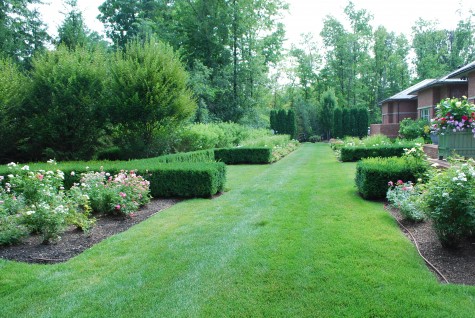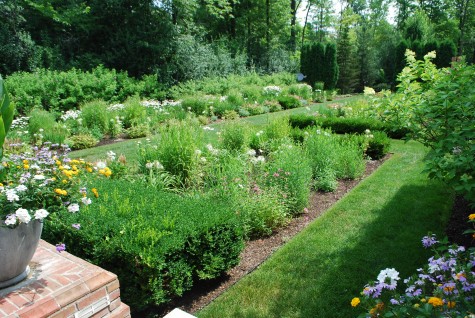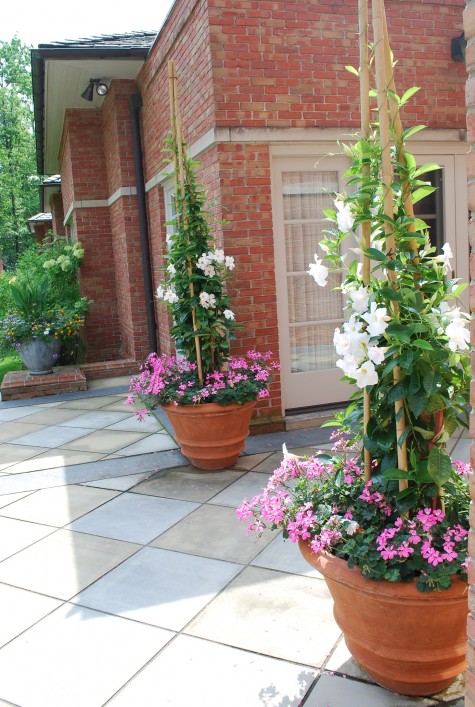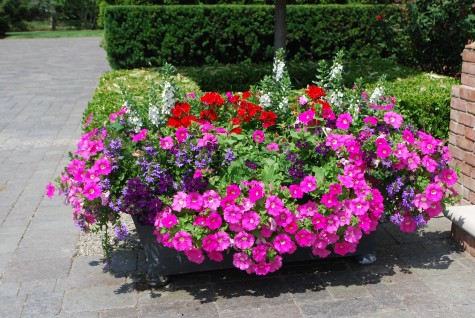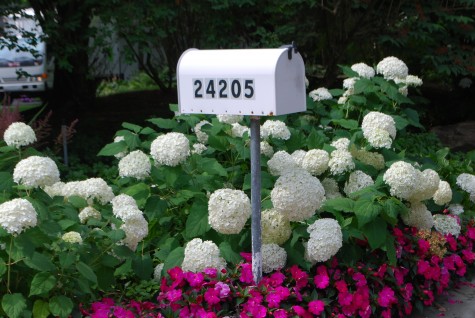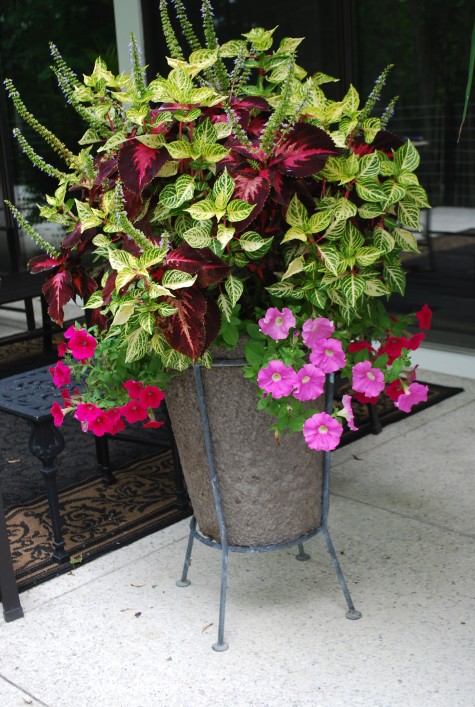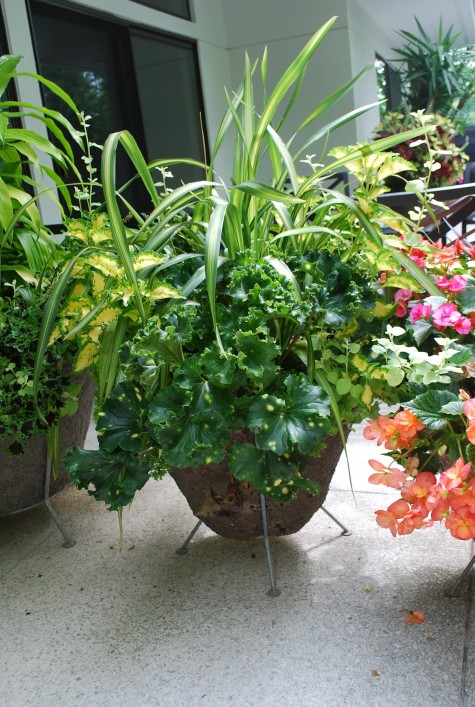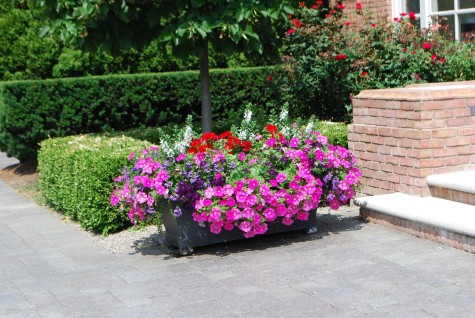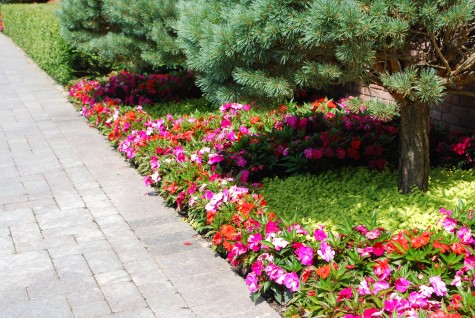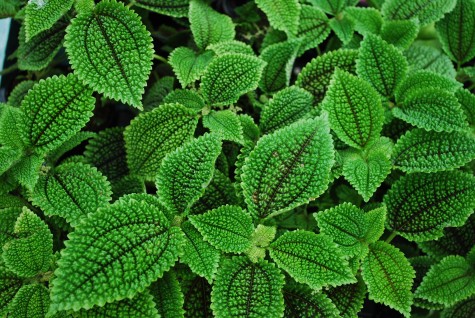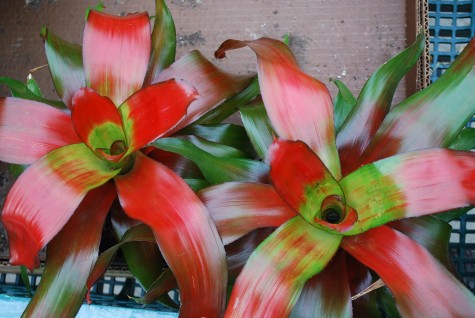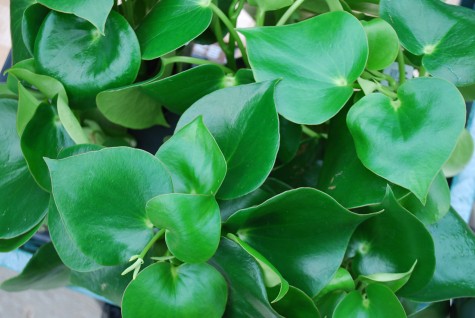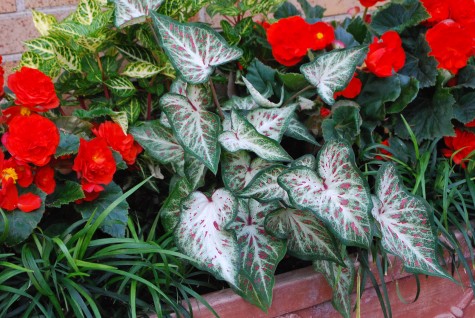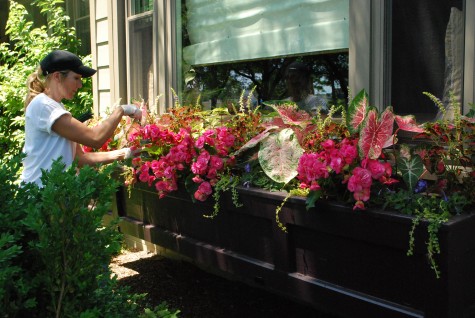I would bet that if I organized and offered a shopping trip with Rob, it would fill up in an instant. There would be a waiting list. He has an eye for where to go, what to see, and what to commit to that interesting and beautiful. His less obvious searches includes sifting through the debris and dried materials that tends to accumulate in vacant land. This abandoned tangle of wire fencing and rotted posts may not upon first glance seem like much seem like much. But I would say the chances are excellent I will see this found object, or this combination of colors and textures and materials, or some semblance of this idea somewhere soon.
 Vacant land has a story to tell. This grass likes the watery ground. Other species only come so close, before conditions are no longer optimal. Plants are very specific about what they want-this picture makes that clear. Given this picture, it is no wonder that lawn saturated with water from automatic irrigation thrives. Other plants are not so crazy about it-they stay away, if they can. I know him well enough to know this wild grass laying over is appealing. Some spot or another in the shop will have this look.
Vacant land has a story to tell. This grass likes the watery ground. Other species only come so close, before conditions are no longer optimal. Plants are very specific about what they want-this picture makes that clear. Given this picture, it is no wonder that lawn saturated with water from automatic irrigation thrives. Other plants are not so crazy about it-they stay away, if they can. I know him well enough to know this wild grass laying over is appealing. Some spot or another in the shop will have this look.
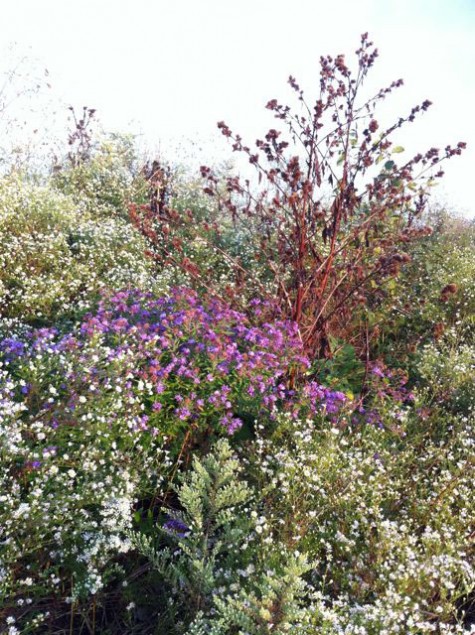 Wild asters have small and insignificant individual flowers, but large colonies of them can be very beautiful. Weedy and wonderful, this. Rob’s pictures are a harbinger of what is to come from him. The other day Rob nailed a twig bird feeder to a chestnut fence post, and set the post in a tall limestone cylinder. Wedged into the cylinder around the fence post, a few wisps of weedy plastic grass. The idea of plastic grass appeals to no gardener, but should you come in, take a look. There is an utterly natural and believable look to the entire assembly.
Wild asters have small and insignificant individual flowers, but large colonies of them can be very beautiful. Weedy and wonderful, this. Rob’s pictures are a harbinger of what is to come from him. The other day Rob nailed a twig bird feeder to a chestnut fence post, and set the post in a tall limestone cylinder. Wedged into the cylinder around the fence post, a few wisps of weedy plastic grass. The idea of plastic grass appeals to no gardener, but should you come in, take a look. There is an utterly natural and believable look to the entire assembly.
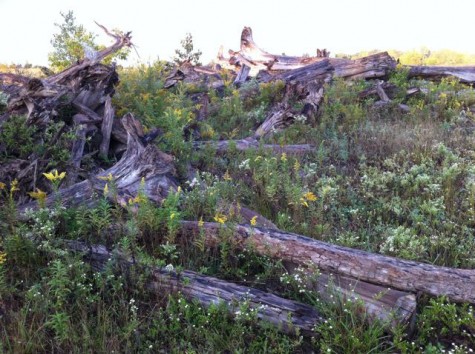 This vacant land is littered with giant logs, the remnants of their roots intact. The goldenrod and asters have grown up around them. The story that lies behind this picture is unclear. They do not look cut, they look rotted off at the very base. They look like they were dumped here. But perhaps this land was inadvertently flooded long enough to kill all of the trees. I am just waiting for Rob to ask if I can send a truck and trailer after them. They would be the perfect material for a stumpery.
This vacant land is littered with giant logs, the remnants of their roots intact. The goldenrod and asters have grown up around them. The story that lies behind this picture is unclear. They do not look cut, they look rotted off at the very base. They look like they were dumped here. But perhaps this land was inadvertently flooded long enough to kill all of the trees. I am just waiting for Rob to ask if I can send a truck and trailer after them. They would be the perfect material for a stumpery.
 I have no clue what thesese shrubby trees might be. They have been dead long enough that the bark is peeling away from the wood from a long standing sun burn. Spooky branches, he calls them. Would they not be perfect for a Halloween vignette? Rob is just as likely to find inspiration from spooky branches in a tract of vacant land as the library. To put it mildly, he has an active imagination. A genuinely original imagination.
I have no clue what thesese shrubby trees might be. They have been dead long enough that the bark is peeling away from the wood from a long standing sun burn. Spooky branches, he calls them. Would they not be perfect for a Halloween vignette? Rob is just as likely to find inspiration from spooky branches in a tract of vacant land as the library. To put it mildly, he has an active imagination. A genuinely original imagination.
 He and I both love asclepias tuberosa-milkweed. Few wild and weedy plants have big luscious leaves like these. The story of how milkweed seeds mature, and are sent aloft is one of the most delightful stories that nature has to tell. When the pods mature, and crack open, the seeds are packed tight in that pod with the unopened parachutes attached, just waiting for a stiff breeze to send them all aloft. An afternoon sky full of milkweed seeds is one of the best visual pleasures of fall.
He and I both love asclepias tuberosa-milkweed. Few wild and weedy plants have big luscious leaves like these. The story of how milkweed seeds mature, and are sent aloft is one of the most delightful stories that nature has to tell. When the pods mature, and crack open, the seeds are packed tight in that pod with the unopened parachutes attached, just waiting for a stiff breeze to send them all aloft. An afternoon sky full of milkweed seeds is one of the best visual pleasures of fall.
 Thistles are a pernicious weed in cultivated gardens. They are almost impossible to eradicate; the roots go very deep, and are very strong. Who would want to touch one? But the seed pods are beautiful. The seeds nourish many a goldfinch. They look great in fall arrangements. If you know of any tract of vacant land in zone 4-5, there will likely be a thistle patch.
Thistles are a pernicious weed in cultivated gardens. They are almost impossible to eradicate; the roots go very deep, and are very strong. Who would want to touch one? But the seed pods are beautiful. The seeds nourish many a goldfinch. They look great in fall arrangements. If you know of any tract of vacant land in zone 4-5, there will likely be a thistle patch.
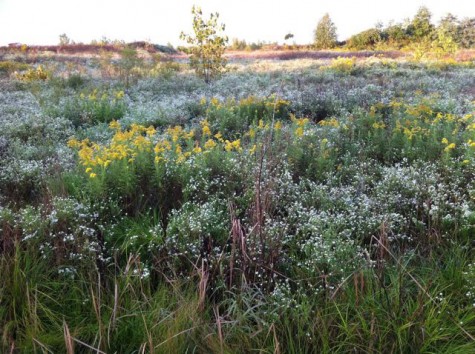 There is a fall party going on here-undisturbed. No one has had a mind to refurbish, zone, or organize this space for residential use. Vacant land in no means implies a vacant space. There are plenty of plant species thriving with no need for any supervision. It may be that the most beautiful places on earth are places that are solely supervised by nature. Every gardener appreciates this.
There is a fall party going on here-undisturbed. No one has had a mind to refurbish, zone, or organize this space for residential use. Vacant land in no means implies a vacant space. There are plenty of plant species thriving with no need for any supervision. It may be that the most beautiful places on earth are places that are solely supervised by nature. Every gardener appreciates this.
 Rob took all of these photographs-of course he spotted this giant thickly growing clump of asparagus. Did it grow from a seed? Was there a farmhouse here decades ago? The mystery that is nature is alive and well on this vacant land. A shopping trip with Rob to a vast tract of vacant land? It might be better than you think.
Rob took all of these photographs-of course he spotted this giant thickly growing clump of asparagus. Did it grow from a seed? Was there a farmhouse here decades ago? The mystery that is nature is alive and well on this vacant land. A shopping trip with Rob to a vast tract of vacant land? It might be better than you think.

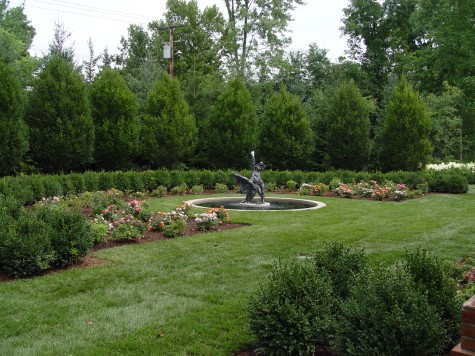
 On either side of this center section, simple lawn panels edged in boxwood. At the far ends, a pair of herbaceous borders on both sides of the lawn. The wild landscape in the background would be left as is, although there were a number of ash trees dead and dying which had to come down.
On either side of this center section, simple lawn panels edged in boxwood. At the far ends, a pair of herbaceous borders on both sides of the lawn. The wild landscape in the background would be left as is, although there were a number of ash trees dead and dying which had to come down. 